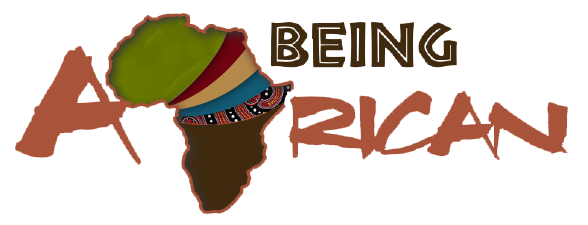Music & Dance in Xhosa Culture
BEING AFRICAN- AFRICAN CULTURE EXPLAINED
XHOSA MUSIC HIGHLIGHTS
When you visit one of the provinces of South Africa, the Eastern Cape, you will notice that music is an integral part of the Xhosa culture. The music highlights their values, history, and heritage.
Music
Music is highly regarded the Xhosa culture. Enoch Sontonga, a Xhosa Methodist mission school teacher, composed what is acknowledged as a symbolic song for Africa- Nkosi sikelel’iAfrika (God bless Africa). Versions of the song were adopted as the national anthem of 5 other countries, including Zimbabwe, Zambia, Tanzania, and Namibia. This anthem was later amended when South Africa regained independence marking the end of the Apartheid regime.
South African National Anthem
Nkosi Sikelel’iAfrika
(God bless Africa)
Maluphakanyisw’uphondo lwayo
(Raise high Her glory)
Yiva imithandazo yethu
(Hear our prayers)
Nkosi sikelela thina lusapho lwayo
(God bless us, we her children)
Morena boloka setjhaba sa heso
(God protect our nation)
O fedise dintwa le matshwenyeho
(End all wars and tribulations)
O se boloke, O se boloke setjhaba sa heso
(Protect us, protect our nation)
Setjhaba sa South Afrika – South Afrika
(Our nation South Africa – South Africa)
Uit die blou van onse hemel
(Ringing out from our blue heavens)
Uit die diepte van ons see
(From the depth of our seas)
Oor ons ewige gebergtes
(Over our everlasting mountains)
And united we shall stand.
Sounds like the call to come together
Let us live and strive for freedom
In South Africa, our land.
Another popular Xhosa song is “uQongqothwane,” also known as “The Click Song” by Miriam Makeba. It was released in 1960. uQongqothwane is a traditional wedding song about uQongqothwane (knocking beetle) that bringsgood blessings to those getting married.
Various musical instruments are used in the Xhosa culture, with “Umrhubhe” and Uhadi” being the two fundamental sounds in Xhosa music. Musical instruments are categorized into two, namely, Individual Musical Instruments and Communal Musical Instruments (played by a group of people).
Individual Musical Instruments
These instruments were used for solo performances.
Uhadi: This is one of the traditional instruments women play during traditional ceremonies like weddings and rites of passage. The Uhadi is made from wood from trees called “umbangandlela” and “uliza.” This instrument is a musical bow attached to a dried, empty, hard calabash with two holes. It has a string made from a length of animal gut or hair.
Uhadi is played by beating or pinching the string with a scraped stick or reed.
Umrhubhe: This is another traditional instrument used. It is a friction mouth bow with a curved shape made from a dried grass stem and a strong wood with a brass wire that forms a string to produce the sound.
Isitololo (Jew’s harp): This instrument is a braced mouth bow played together with uhadi and umrhubhe.
Communal Musical Instruments
These instruments are used by a group of people performing a particular song.
Drums: There are two types of drums that are used:
Ikawu: These drums are played mainly during the ulwaluko (initiation of boys) ceremony. They are made from ox-skin and beaten with a knobkerrie.
Ingqongqo: These drums are mainly used for ceremonies such as during the male circumcision ceremony. They are made from a stiff dried ox hide and beaten with hard sticks.
(What is ifleyiti nophondo)Whistle, Harmonica, and Horns: (Impempe, ifleyiti nophondo) these are blown by the player to produce a sound.
Rattles are percussion instruments usually worn on the ankles to produce a sound when one dances. Some rattles are shaken by hand to enhance the sound.
Some of the instruments mentioned above are slowly becoming extinct. However, in some parts of the Eastern Cape, for instance, in Pondoland, they are still played during traditional ceremonies.
MUSIC
In the Xhosa culture, social activities and traditional ceremonies are usually marked by music and dance. The following are different types of songs for other occasions.
Religious songs: These are primarily hymns.
Lullaby: A song to soothe a baby or a child (ingoma yokuthuthuzela usana okanye umntwana)
Folk song: You hear folk songs when one tells a tale. (ingoma yentsomi)
Dance/ party song: These songs are sung when there is a youth dance called intlombe/ umtshotsho or when there is a ritual rite of passage ceremony of initiating a girl (intonjane) or initiating a boy
(ulwaluko)
Circumcision and girl initiation songs: When the ritual rite of circumcision (ukwaluka for the boy and intonjane for the girl) is held, you will hear older men singing songs like Somagwaza welcoming their son to manhood.
Wedding songs: Everyone will be happy and cheerful at this ceremony singing iingoma zomtshato (wedding songs) and dancing.
DANCE
Umxhentso: perform this traditional dance during any ceremony. The way you dance Umxhentso differs. Umxhentso has always been a source of pride for the Xhosa people. Umxhentso is inspired by wedding ceremonies, battles, celebrations, and everyday life.
Communal clapping of hands, roaring, and stamping feet on the ground is characteristic of most Xhosa dances.
Umtyityimbo: This dance is a traditional dance that the Xhosas master. Children are encouraged and taught how to tyityimba (shaking the shoulders) and stamp the feet simultaneously at an early age. When performed, the person(s) dancing will make their upper bodies tremble and vibrate, and their shaking becomes increasingly pronounced. Both females and males perform this dance. They paint their faces with the traditional red ochre or white Abimbola. They also wear traditional Xhosa clothing (imibhaco) and carry tonga (knobkerrie) sticks.
Umteyo: This is the dance performed mainly by older men due to their experience. It involves the shaking and the rapid undulation of the upper body accompanied by singing and clapping hands.
